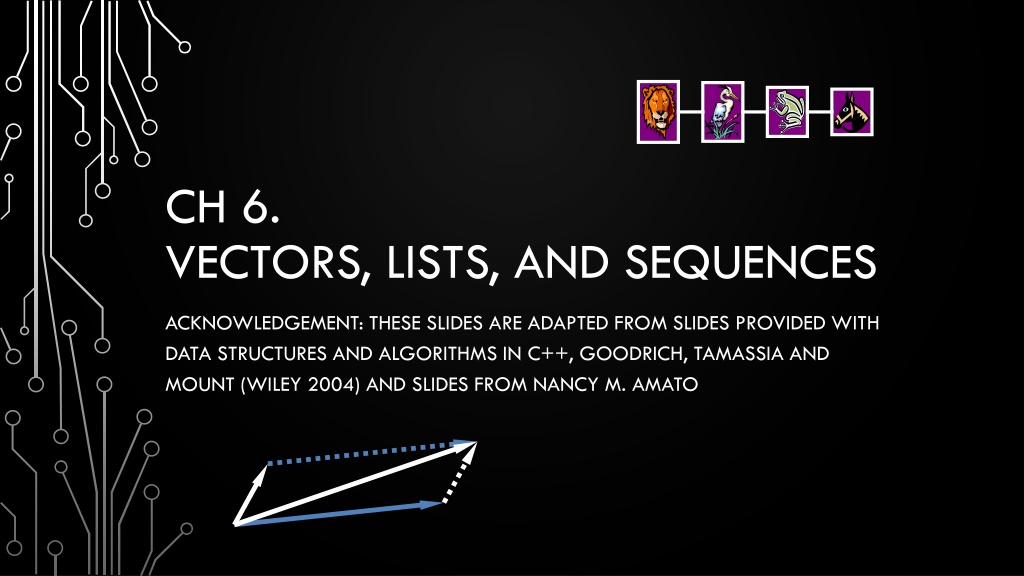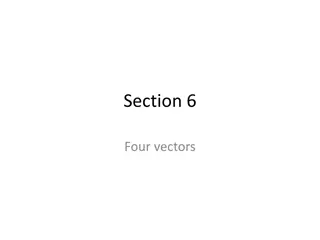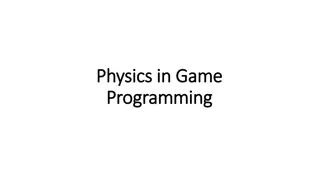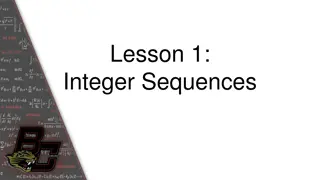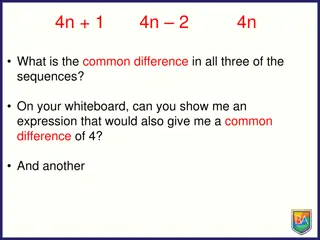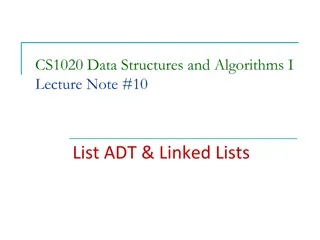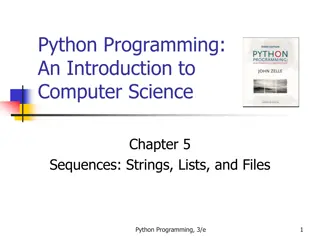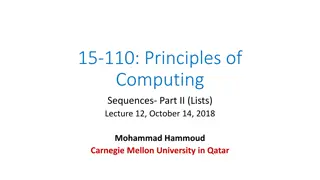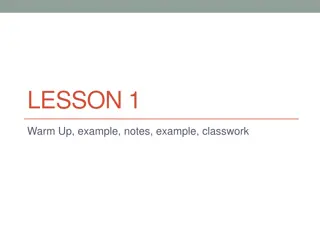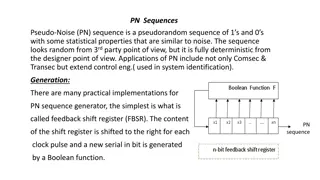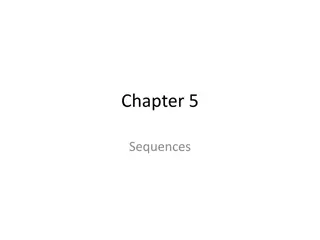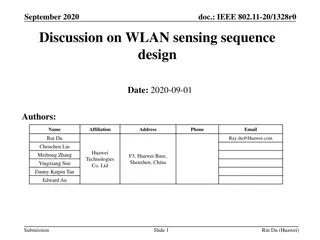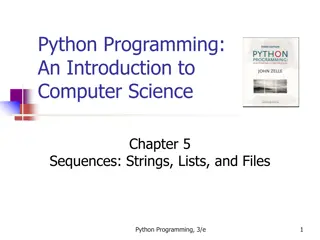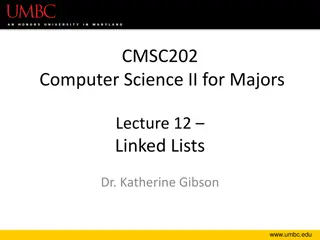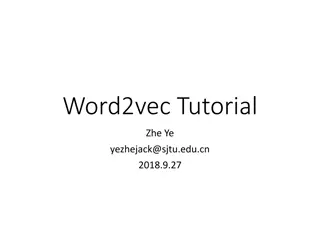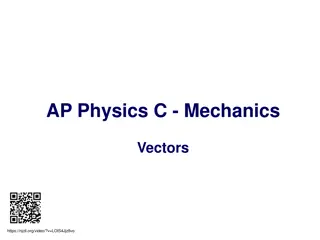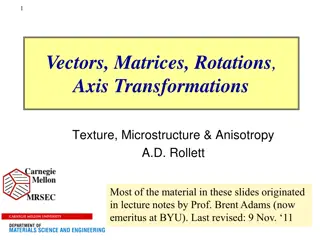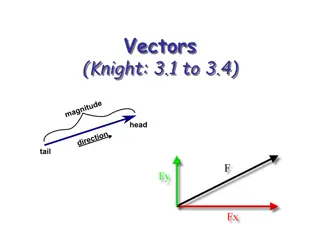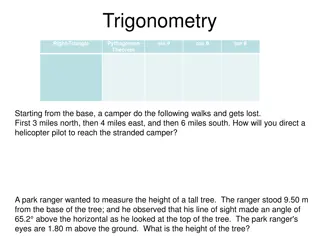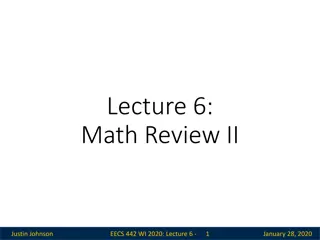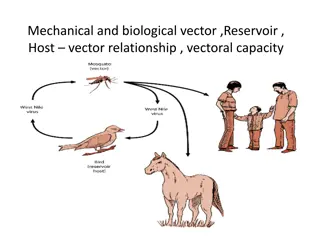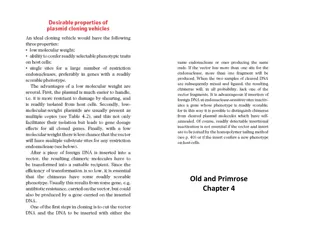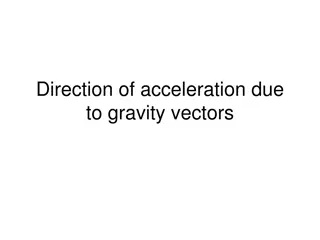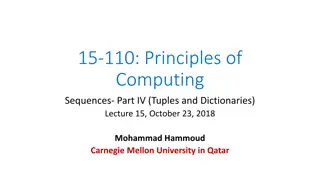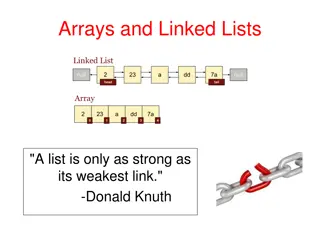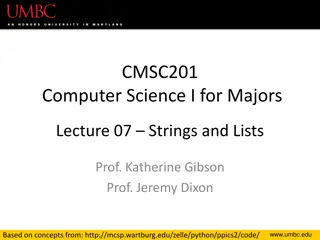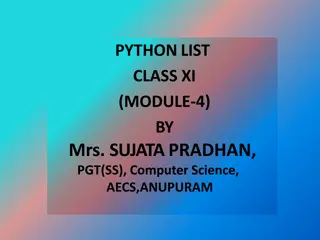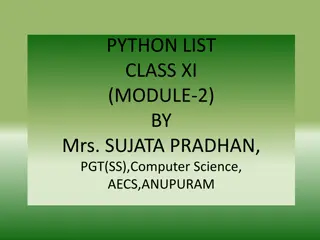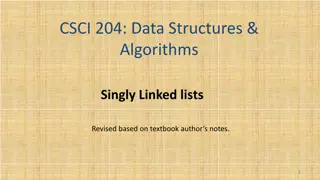Overview of Vectors, Lists, and Sequences in C++
Adapted from the "Data Structures and Algorithms in C++" textbook, these slides delve into the Vector Abstract Data Type (ADT), array-based implementation, applications, operations, storage methods, insertion, deletion, and performance considerations related to arrays in C++. They provide a comprehensive insight into the fundamental concepts and practical aspects of managing data using vectors in C++.
Download Presentation

Please find below an Image/Link to download the presentation.
The content on the website is provided AS IS for your information and personal use only. It may not be sold, licensed, or shared on other websites without obtaining consent from the author. Download presentation by click this link. If you encounter any issues during the download, it is possible that the publisher has removed the file from their server.
E N D
Presentation Transcript
CH 6. VECTORS, LISTS, AND SEQUENCES ACKNOWLEDGEMENT: THESE SLIDES ARE ADAPTED FROM SLIDES PROVIDED WITH DATA STRUCTURES AND ALGORITHMS IN C++, GOODRICH, TAMASSIA AND MOUNT (WILEY 2004) AND SLIDES FROM NANCY M. AMATO
VECTORS The Vector ADT (Ch. 6.1.1) Array-based implementation (Ch. 6.1.2)
APPLICATIONS OF VECTORS Direct applications Sorted collection of objects (elementary database) Indirect applications Auxiliary data structure for algorithms Component of other data structures
VECTOR ADT The Vector ADT extends the notion of array by storing a sequence of arbitrary objects An element can be accessed, inserted or removed by specifying its rank (number of elements preceding it) An exception is thrown if an incorrect rank is specified (e.g., a negative rank) Main vector operations: at ? : returns the element at index ? set ?,? : replace the element at index ? with ? insert ?,? : insert a new element ? to have index ? erase ? : removes the element at index ? Additional operations size() and empty()
ARRAY-BASED VECTOR STORAGE Use an array ? of size ? A variable ? keeps track of the size of the vector (number of elements stored) at ? is implemented in ? 1 time by returning ? ? ? 1 0 ? 0 1 2 n i
ARRAY-BASED VECTOR INSERTION In insert ?,? , we need to make room for the new element by shifting forward the ? ? elements ? ? , ,? ? 1 In the worst case (? = 0), this takes ? ? time V 0 1 2 n i V 0 1 2 n i V e i 0 1 2 n
ARRAY-BASED VECTOR DELETION In erase ? , we need to fill the hole left by the removed element by shifting backward the n r 1 elements V[r +1], , V[n 1] In the worst case (r =0), this takes O(n) time V e i 0 1 2 n V 0 1 2 n i V 0 1 2 n r
PERFORMANCE In the array based implementation of a Vector The space used by the data structure is ?(?) size(), empty(), at(?), and set ?,? run in ?(1) time insert ?,? , and erase ? run in ?(?) time In an insert ?,? , when the array is full, instead of throwing an exception, we can replace the array with a larger one
EXERCISE: Implement the Deque ADT using Vector functions Deque functions: front(), back(), insertFront(?), insertBack(?), eraseFront(), eraseBack(), size(), empty() Vector functions: at ? , set ?,? , insert ?,? , erase ? , size(), empty()
EXERCISE SOLUTION: Deque Realization using Vector Functions size() and empty() at(0) size() and empty() front() back() at ????() 1 insertFront(?) insert(0,?) insertBack(?) insert(????(),?) eraseFront() erase(0) eraseBack() erase ????() 1
VECTOR SUMMARY Array Fixed-Size or Expandable List Singly or Doubly Linked ??????(?,?) and ?????(?) ?(1) Best Case (? = ?) ?(?) Worst Case ?(?) Average Case ? ??(?) and ???(?,?) ?(1) ? ????() and ?????() ?(1) ?
ITERATORS AND POSITIONS An iterator abstracts the process of scanning through a collection of elements Can be implemented on most data structures in this course, e.g., vector and list Methods of the Iterator ADT: hasNext() returns whether another element follows next() returns iterator for next element elem() return element at position, also known as dereference in C++ (* operator) Iterators handle many operations in a uniform way Example insert for list and vector take iterators so the functions are called the same way Traversal of data structure from begin() to end()
LISTS AND SEQUENCES Iterators (Ch. 6.2.1) List ADT (Ch. 6.2.2) Doubly linked list (Ch. 6.2.3) Sequence ADT (Ch. 6.3.1) Implementations of the sequence ADT (Ch. 6.3.2-3)
LIST ADT The List ADT models a sequence of positions storing arbitrary objects establishes a before/after relation between positions It allows for insertion and removal in the middle Generic methods: size() and empty() Accessor methods: begin() and end() Update methods: insertFront(?), insertBack(?), insert(?,?) Note insert will insert ? before iterator ? eraseFront(), eraseBack(), erase(?)
INSERT ?,? p A B C p q A B C X p q A B X C
ERASE(?) p A B C D A B C p D A B C
PERFORMANCE Assume doubly-linked list implementation of List ADT The space used by a list with ? elements is ?(?) The space used by each iterator of the list is ?(1) All the operations of the List ADT run in ?(1) time
LIST SUMMARY List Singly-Linked List Doubly- Linked begin(), end(), insertFront(), insertBack(), eraseFront() insert(?,?), eraseBack(), erase() size() and empty() ?(1) ?(1) ?(?) Worst and Average case ?(1) Best case ?(1) ?(1) ?(1)
SEQUENCE ADT The Sequence ADT is a combination of the Vector and List ADTs Elements accessed by Index or Iterator (Position) All items in the List ADT plus the following bridging functions: atIndex(?) returns position of element at index ? indexOf(?) returns index of element at position ?
APPLICATIONS OF SEQUENCES The Sequence ADT is a basic, general-purpose, data structure for storing an ordered collection of elements Direct applications: Generic replacement for stack, queue, vector, or list Small database (e.g., address book) Indirect applications: Building block of more complex data structures
ARRAY-BASED IMPLEMENTATION elements We use a circular array storing positions A position object stores: Element Index Indices ? and ? keep track of first and last positions 0 1 2 3 positions S f l
SEQUENCE IMPLEMENTATIONS Circular Array List Doubly- Linked ????(), ?????(), ?????(), ???(), ???????????(), ??????????() ?(1) ?(1) ???????(?) and ???????(?) ?(1) ?(?) ??????(?,?) and ?????(?) ?(?) ?(1)
INTERVIEW QUESTION 1 Write code to partition a list around a value x, such that all nodes less than x come before all nodes greater than or equal to x. GAYLE LAAKMANN MCDOWELL, "CRACKING THE CODE INTERVIEW: 150 PROGRAMMING QUESTIONS AND SOLUTIONS", 5TH EDITION, CAREERCUP PUBLISHING, 2011.
INTERVIEW QUESTION 2 Implement a function to check if a list is a palindrome. GAYLE LAAKMANN MCDOWELL, "CRACKING THE CODE INTERVIEW: 150 PROGRAMMING QUESTIONS AND SOLUTIONS", 5TH EDITION, CAREERCUP PUBLISHING, 2011.
